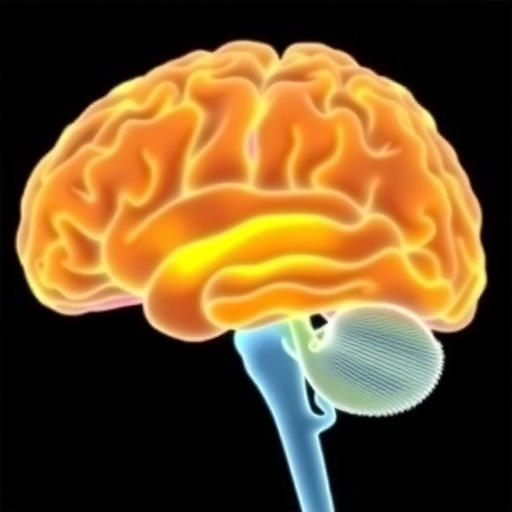In a groundbreaking re-evaluation of Parkinson’s Disease (PD) and related synucleinopathies, recent research has suggested a transformative paradigm shift in our understanding of these complex neurological disorders. Over three decades of mechanistic study have illuminated the intertwined nature of protein and lipid dysregulation within the pathology of PD. Specifically, emerging evidence reinforces the concept that PD can be categorized not merely as a proteinopathy, but as a unique ‘fatty acidopathy’—a condition marked by significant disturbances in fatty acid metabolism. This hypothesis is underscored by the discovery of a synergistic relationship between the protein α-synuclein and various lipids, which are crucial for maintaining cellular homeostasis, particularly in the brain.
In this detailed exploration, the connection between lipid abnormalities and the pathophysiology of PD is scrutinized. Intriguingly, the role of lipids in influencing both the physiological and pathological interactions of α-synuclein has gained traction, painting a compelling portrait of how these interactions may dictate disease progression. The study underscores the idea that alterations in the fatty acid-ome represent a primary pathology in PD and associated disorders, marking a significant departure from traditional understandings that primarily focus on α-synuclein aggregation alone.
Researchers across various laboratories have amassed substantial evidence indicating that PD reflects significant fatty acid dyshomeostasis. This dyshomeostasis involves an imbalance that disrupts normal lipid metabolism and function, thereby contributing to the neurodegenerative process. Current findings suggest that disturbances in the composition and metabolism of fatty acids are not simply byproducts of PD but rather fundamental aspects of its etiology. Through this lens, the dysregulation of fatty acids emerges not just as a symptom, but as a central feature, critical for understanding the pathogenesis of not only PD but also other α-synucleinopathies.
One of the central tenets of this new hypothesis is the concept of α-synuclein binding to the fatty acid components present in cytoplasmic vesicles. These β-sheet structured regions of α-synuclein appear to interact transiently with fatty acid side chains, unveiling a novel aspect of α-synuclein’s biological function. This interaction is posited to underlie important aspects of membrane dynamics and signaling pathways integral to neuronal health. For instance, it’s been suggested that such binding events could influence lipid-mediated intracellular transport and protein aggregation dynamics, thereby modulating neuronal function and survival.
As researchers delve deeper into the role of fatty acid interactions within the brain, it’s becoming apparent that the interplay between α-synuclein and lipids is far from incidental. The fatty acid-rich environment of the brain may serve as a crucial battleground where healthy neuronal function collides with the pathological processes leading to neurodegeneration. This conceptual framework offers insightful implications for understanding how lifestyle factors—particularly those affecting dietary fatty acid profiles—could potentially influence the risk and progression of PD.
Moreover, therapeutic implications arise from recognizing PD as a fatty acidopathy. A focus on fatty acid metabolism and modulation could pave the way for innovative treatment strategies that address the underlying metabolic derangements rather than solely targeting symptomatic relief. Strategies aimed at restoring fatty acid balance might present promising avenues for drug development, as targeting lipid pathways could alter the course of the disease and enhance neuronal resilience.
The exploration of fatty acids in the context of PD does not merely emphasize the significance of dietary intake; it opens up avenues for research into pharmacological agents aimed at lipid homeostasis. Drugs that can correct dyslipidemia or enhance lipid metabolism may hold potential as therapeutic agents for those at risk of developing Parkinson’s or experiencing its debilitating effects. By repositioning PD within the framework of fatty acid dysregulation, we potentially unlock new dimensions in both understanding and treating this multifaceted disease.
As researchers continue to unravel the complexities of PD, it is essential to consider interdisciplinary approaches that integrate input from lipid biochemistry, neurology, and molecular biology. Advances in mass spectrometry and lipidomics may provide the tools needed to dissect the intricate lipid profiles associated with PD and other synucleinopathies. Understanding the molecular underpinnings of fatty acid interactions will be critical for developing strategies to manipulate these pathways therapeutically.
In summary, the reclassification of Parkinson’s Disease as a fatty acidopathy provides a compelling alternative perspective that could influence research directions and clinical approaches. By integrating the roles of lipids and fatty acids into our understanding of PD, we are charting a new course toward potential treatments aimed at altering disease progression and offering hope for those affected by this challenging neurodegenerative disorder.
With this new perspective offering profound implications for research and treatment, the next steps will undoubtedly focus on validating these findings through clinical and preclinical studies. By clarifying how fatty acid dysregulation contributes to neuronal injury and dysfunction, researchers may finally unlock the door to mechanistic insights that could lead to effective interventions for Parkinson’s Disease and its associated synucleinopathies.
Subject of Research: Parkinson’s Disease as a Fatty Acidopathy
Article Title: Parkinson disease is a fatty acidopathy
Article References:
Fanning, S., Selkoe, D. Parkinson disease is a fatty acidopathy.
Nat Rev Neurol (2025). https://doi.org/10.1038/s41582-025-01142-2
Image Credits: AI Generated
DOI:
Keywords: Parkinson’s Disease, fatty acidopathy, α-synuclein, lipid dysregulation, neurodegeneration, fatty acids, metabolism




